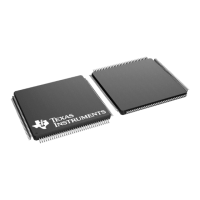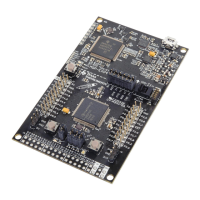Getting Started
www.ti.com
4
SLAU772A–June 2018–Revised March 2020
Submit Documentation Feedback
Copyright © 2018–2020, Texas Instruments Incorporated
MSP430G2553 LaunchPad™ Development Kit (MSP
‑
EXP430G2ET)
1 Getting Started
1.1 Introduction
The MSP430G2553 16-bit MCU has 16KB of flash, 512 bytes of RAM, up to 16-MHz CPU speed, an 8-
channel 10-bit ADC, capacitive-touch enabled I/Os, a universal serial communication interface, and
more – plenty to get started in your development.
Rapid prototyping is simplified by the 20-pin BoosterPack™ plug-in module headers that support a wide
range of available BoosterPack plug-in modules. You can quickly add features like wireless connectivity,
graphical displays, environmental sensing, and much more. You can either design your own BoosterPack
plug-in module or choose among many already available from TI and third-party developers.
The LaunchPad development kit features an integrated DIP target socket that supports up to 20 pins,
allowing MSP430 entry-level MCUs to be plugged into the LaunchPad development kit. The
MSP‑EXP430G2ET LaunchPad development kit comes with an MSP430G2553 MCU by default. The
MSP430G2553 MCU has the most memory available of the compatible entry-level MCUs.
Free software development tools are also available, such as TI's Eclipse-based Code Composer Studio™
IDE (CCS) and IAR Embedded Workbench
®
for MSP430 IDE (IAR EW430). Both of these IDEs support
EnergyTrace™ technology for real-time power profiling and debugging when paired with the
MSP430G2553 LaunchPad development kit. More information about the LaunchPad development kit,
including documentation and design files, can be found on the MSP430G2553 LaunchPad development
kit tool page.
1.2 Key Features
• High-quality 20-pin DIP socket for an easy plug-in or removal of the target MCU
• Supports MSP430G2xx1, MSP430G2xx2, MSP430G2xx3, and MSP430F20xx MCUs in PDIP14 or
PDIP20 packages (see Section 2.9 for a list of supported MCUs)
• EnergyTrace technology available for ultra-low-power debugging
• 20-pin LaunchPad development kit standard leveraging the BoosterPack plug-in module ecosystem
• Onboard eZ-FET debug probe
• 1 button and 3 LEDs for user interaction
1.3 What's Included
1.3.1 Kit Contents
• 1x MSP-EXP430G2ET LaunchPad development kit
• 1x micro USB-B cable
• 1x quick start guide
1.3.2 Software Examples
• Out-of-box software
1.4 First Steps: Out-of-Box Experience
An easy way to get started with the EVM is by using its preprogrammed out-of-box code. It demonstrates
some key features of the EVM.
1.4.1 Connecting to the Computer
Connect the LaunchPad development kit to a computer using the included USB cable. The green power
and yellow LDO LEDs should illuminate. For proper operation, drivers are needed. TI recommends
installing the drivers by installing an IDE such as TI CCS or IAR EW430. Drivers are also available at
http://www.ti.com/MSPdrivers.

